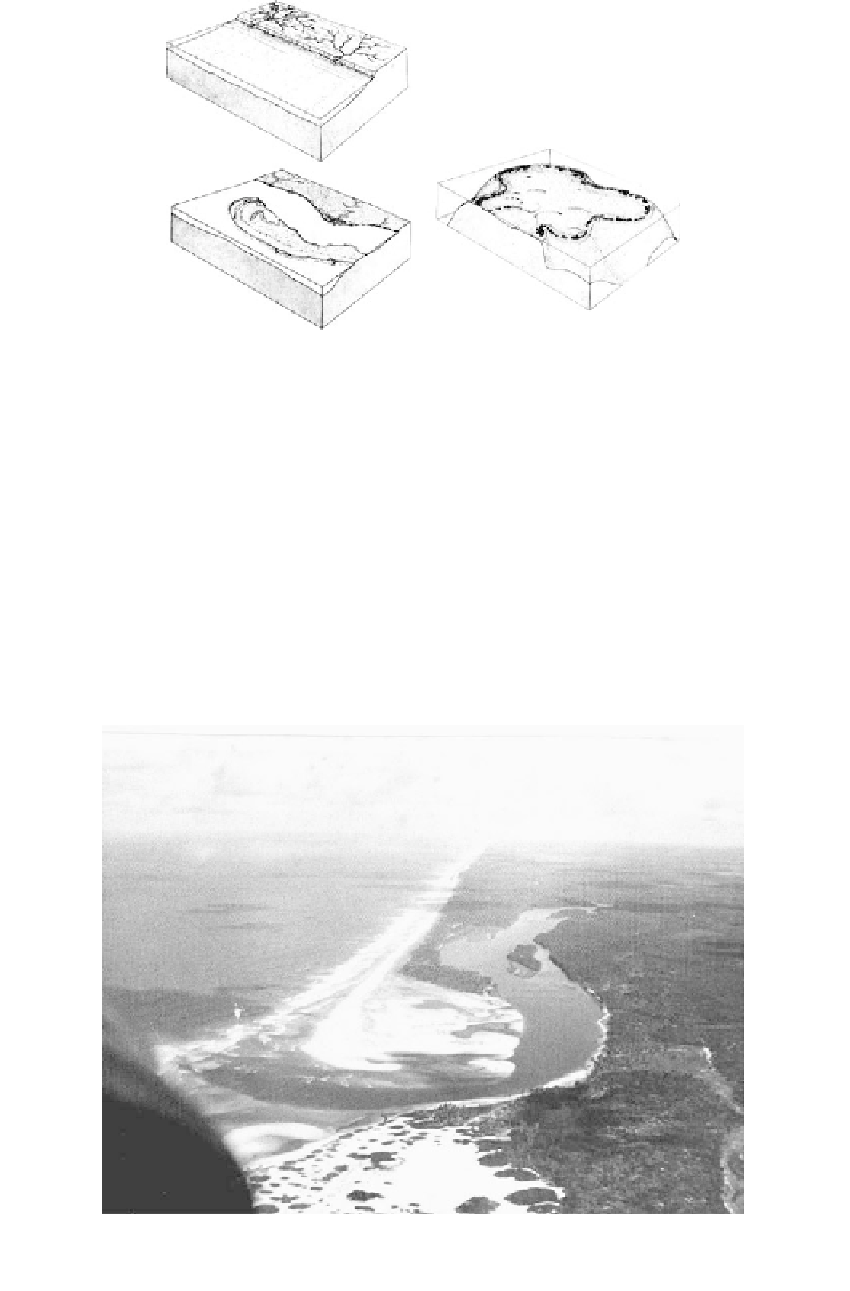Environmental Engineering Reference
In-Depth Information
(a)
(b)
(c)
FIGURE 7.44
Secondary coastlines. (a) Wave erosion coast. Wave attack usually results in a straight coastline, unless the
rocks vary from soft to resistant, in which case in irregular coastline develops. Characteristic of the straight
coastline are inshore cliffs and a shallow, gently inclined seafloor. (b) Marine depositional coast. Waves and
currents deposit barrier islands and spits along the shoreline, fluvial activity fills in the lagoons and tidal
marshes develop. From the aspect of soil deposition and engineering problems, it is the most important
coastline class because of the variation of material types and properties and its common occurrence along
thousands of kilometers of shoreline of the U.S. east and Gulf coasts. Offshore waters are characteristically
shallow. The Landsat image in
Figure 7.36
illustrated a typical marine depositional coastline. (c) Organically
built coastline. Includes coral reefs and mangrove growths, common in the tropics. The mangrove trees grow
out into the water, particularly in shallow bays, resulting in the deposition of mud around the roots. (From
Hamblin, W. K. and Haward, J. L.,
Physical Geology Laboratory Mamal
, Burgess Publishing Co., Minneapolis,
1972. With permission.)
FIGURE 7.45
Migrating barrier beach forming a spit and dislocating the mouth of the Rio Itappicuru, Bahia, Brazil. Note
large dune deposits and tidal marsh inland.


